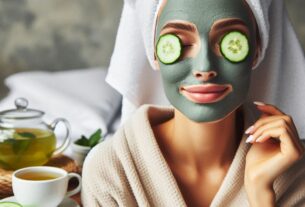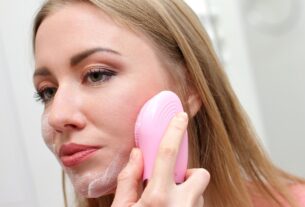Have you ever wondered what it takes to maintain a youthful glow? With a sea of skincare products and routines, it can be overwhelming to know where to start. Fear not; by following a few essential steps, you can achieve and maintain radiant, youthful skin.
The Importance of Skincare
Your skin is the largest organ of your body, and it works tirelessly to protect you from external elements, regulate temperature, and keep you hydrated. Taking good care of it isn’t just about aesthetics; it’s about overall wellness. A consistent skincare routine can prevent a plethora of problems ranging from acne to premature aging, thus contributing to your long-term health.
Understanding Your Skin Type
Before diving into specific steps, it’s crucial to understand your skin type. After all, a routine meant for oily skin won’t benefit someone with dry skin. Here’s a quick rundown of the main skin types and their characteristics:
| Skin Type | Characteristics |
|---|---|
| Oily | Enlarged pores, shiny complexion, prone to acne |
| Dry | Flaky, rough texture, tight feeling |
| Combination | Oily in the T-zone (forehead, nose, chin), dry or normal elsewhere |
| Sensitive | Easily irritated, prone to redness and reactions |
| Normal | Balanced, rarely breaks out |
Knowing your skin type will help you choose the right products and tailor your routine for optimal results.
How to Determine Your Skin Type
One easy way to identify your skin type at home is the blotting paper test. Gently pat a blotting paper on different areas of your face and then hold it up to the light to see the oil markings. Here’s what to look for:
- Little to no oil: You have dry skin.
- Oil in the T-zone: You have combination skin.
- Oil across the blotting paper: You have oily skin.
- No particular pattern, but some sensitivity: You likely have sensitive skin.
- Uniform oil-free pattern: You have normal skin.
Essential Skincare Steps
1. Cleansing
Cleansing is the foundation of any skincare routine. It helps remove dirt, oil, makeup, and other impurities that accumulate on your skin throughout the day.
How to Cleanse Properly
Use a gentle, pH-balanced cleanser tailored to your skin type. For oily or acne-prone skin, a salicylic acid-based cleanser can help control oil production. If you have dry skin, opt for a hydrating cleanser with ingredients like glycerin or hyaluronic acid.
- Wet your face: Use lukewarm water.
- Apply the cleanser: Use a dime-sized amount and gently massage it into your skin in circular motions.
- Rinse thoroughly: Ensure no residue is left behind.
- Pat dry: Use a soft towel; avoid rubbing your face.
2. Exfoliation
Exfoliation helps remove dead skin cells, promoting cell turnover and revealing fresher, brighter skin. However, it should be done in moderation to avoid irritation.
Types of Exfoliants
There are two main types of exfoliants: physical and chemical.
- Physical Exfoliants: These contain small particles or granules that physically scrub away dead skin cells. Use with caution to avoid micro-tears in the skin.
- Chemical Exfoliants: These use acids or enzymes to dissolve dead skin cells. Common chemical exfoliants include AHAs (glycolic acid, lactic acid) and BHAs (salicylic acid).
For most skin types, exfoliating 1-3 times a week is sufficient. Sensitive skin types should opt for milder, less frequent exfoliation.
3. Toning
Toning may seem like an unnecessary step, but it serves multiple purposes. Toners can help balance your skin’s pH, remove any residual cleanser, and prepare your skin to absorb subsequent products more effectively.
Choosing the Right Toner
Select a toner based on your skin type and needs:
- Hydrating Toner: Good for dry or sensitive skin. Look for ingredients like hyaluronic acid or rose water.
- Astringent Toner: Suitable for oily or acne-prone skin. Ingredients like witch hazel or salicylic acid can help control oil.
- Balancing Toner: Ideal for combination skin, these often include a mix of hydrating and oil-controlling ingredients.
4. Serum Application
Serums are concentrated formulations packed with active ingredients designed to target specific skin concerns such as aging, hyperpigmentation, or acne.
Key Ingredients to Look For
Depending on your skin goals, opt for serums containing ingredients like:
- Vitamin C: Brightens and evens out skin tone.
- Hyaluronic Acid: Hydrates and plumps the skin.
- Retinol: Helps in cell turnover and reduces signs of aging.
- Niacinamide: Reduces redness and improves the barrier function.
Apply your serum after toning and before moisturizing. A few drops are usually sufficient.
5. Moisturizing
Regardless of your skin type, moisturizing is crucial. It helps maintain the skin barrier, keeping it hydrated and protected.
Selecting Your Moisturizer
Different skin types require different formulations:
- Oily Skin: Lightweight, non-comedogenic lotions or gels.
- Dry Skin: Thicker creams with hydrating ingredients like ceramides and shea butter.
- Combination Skin: A balanced, non-greasy moisturizer.
- Sensitive Skin: Fragrance-free and hypoallergenic formulas.
6. Sun Protection
Perhaps the most crucial step in any skincare routine is sun protection. The sun’s UV rays can cause premature aging, hyperpigmentation, and even skin cancer.
How to Choose and Apply Sunscreen
Opt for a broad-spectrum sunscreen with at least SPF 30. Mineral sunscreens containing zinc oxide or titanium dioxide are generally well-tolerated by all skin types, including sensitive skin.
- Apply generously: Cover all exposed skin areas.
- Reapply: Every two hours, or immediately after swimming or sweating.
Advanced Skincare Steps
Once you’ve mastered the basics, you can introduce advanced steps into your regimen to amplify your results.
1. Eye Cream
The skin around your eyes is thinner and more delicate, making it prone to fine lines and puffiness. Eye creams formulated with peptides, caffeine, or hyaluronic acid can address these concerns.
2. Masks
Face masks can offer a quick boost to your skincare routine. Depending on your needs, you can use:
- Hydrating Masks: Great for adding an extra layer of moisture.
- Clay Masks: Ideal for oily and acne-prone skin to draw out impurities.
- Sheet Masks: Infused with various serums for targeted benefits.
Using a mask once or twice a week can complement your regular skincare routine.
3. Facial Oils
Facial oils can provide extra hydration and nourishment, especially for dry skin. Oils like jojoba, rosehip, or argan are beneficial and can be used alone or mixed with your moisturizer.
4. Treatments for Specific Problems
If you have specific skin concerns, incorporating targeted treatments can deliver better results. For example, hyperpigmentation can be addressed with products containing ingredients like hydroquinone or tranexamic acid, while acne can benefit from benzoyl peroxide or topical retinoids.
Seasonal Adjustments
Just as you don’t wear the same clothes in winter as you do in summer, your skincare routine should also change with the seasons. Colder months may call for more hydrating and nourishing products, while lighter, non-greasy products are better suited for summer.
Lifestyle Factors
Skincare isn’t just about what you apply to your face; your lifestyle choices also play a significant role. Here are some key factors to consider:
- Diet: A balanced diet rich in vitamins and antioxidants supports skin health.
- Hydration: Drinking adequate water keeps your skin hydrated from within.
- Sleep: Quality sleep allows your skin to repair and regenerate.
- Stress Management: High-stress levels can exacerbate skin issues. Practices like meditation can help.
Common Mistakes to Avoid
Making mistakes in your skincare routine can negate all your efforts. Here are some common pitfalls to steer clear of:
- Using too many products: Overloading your skin can lead to irritation and breakouts.
- Skipping sunscreen: Even if it’s cloudy, UV rays can still affect your skin.
- Not removing makeup properly: Leaving makeup on overnight can clog pores and lead to breakouts.
- Ignoring the skin on your neck and décolletage: These areas are also prone to aging and need care.
Tailoring Your Routine
Your skincare routine isn’t static. It should evolve with your skin’s needs, which can change due to factors like age, hormonal fluctuations, and environmental conditions. Regularly assess your skin and adjust your routine accordingly.
Understanding and implementing these essential skincare steps can make a world of difference in achieving and maintaining a youthful glow. By paying attention to your skin’s needs and making informed choices, you’ll not only look great but feel great too. So, take the plunge and give your skin the love and care it truly deserves.




